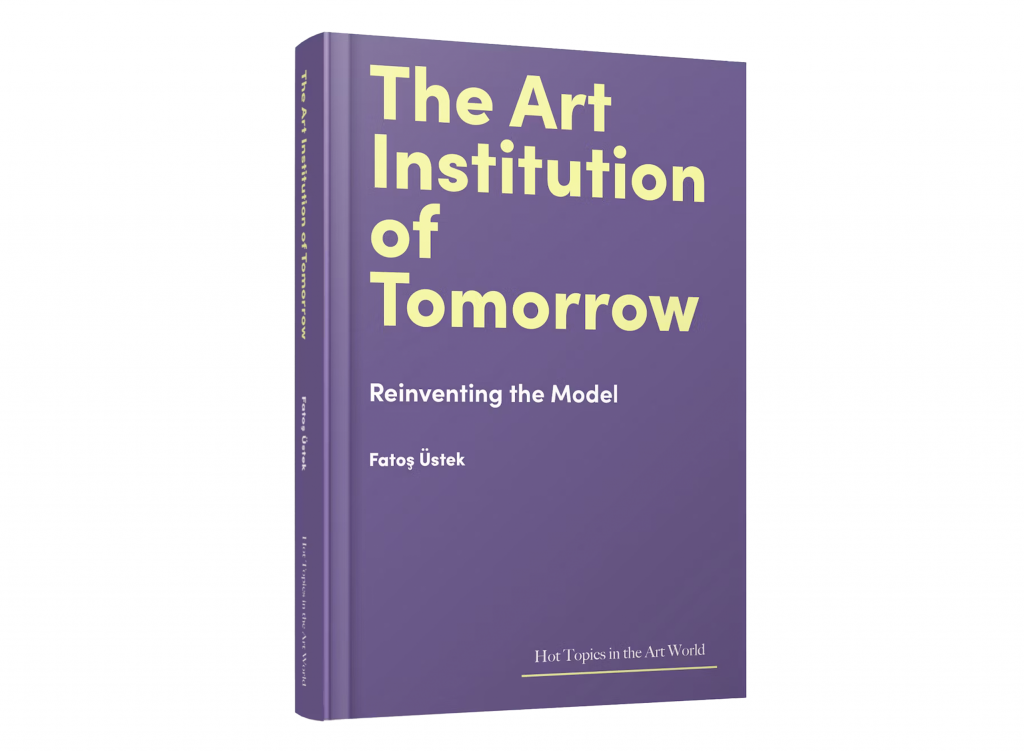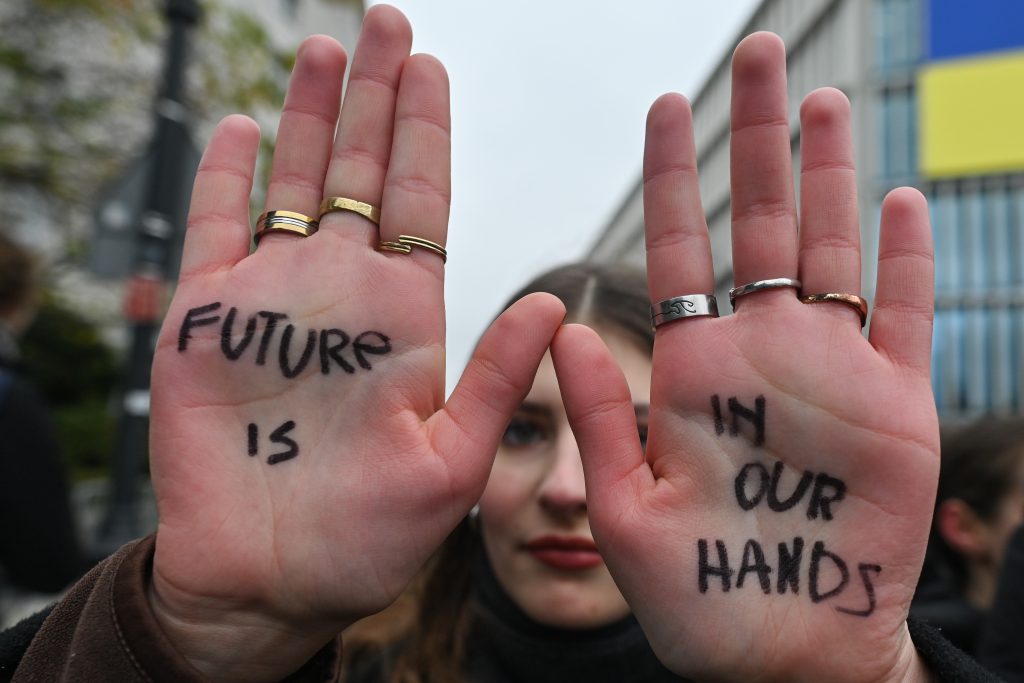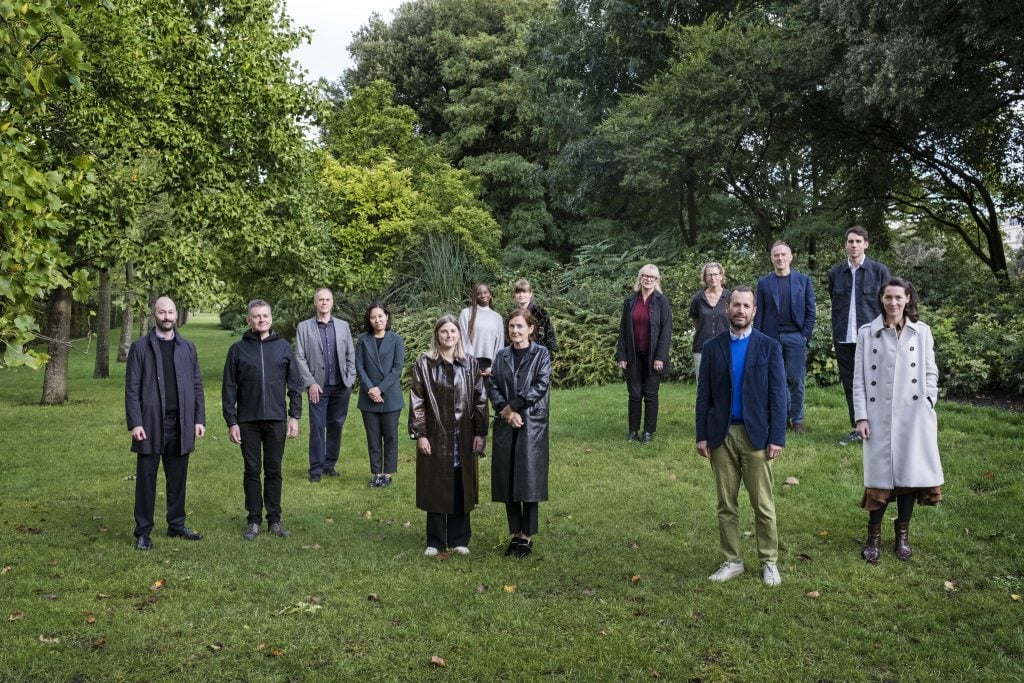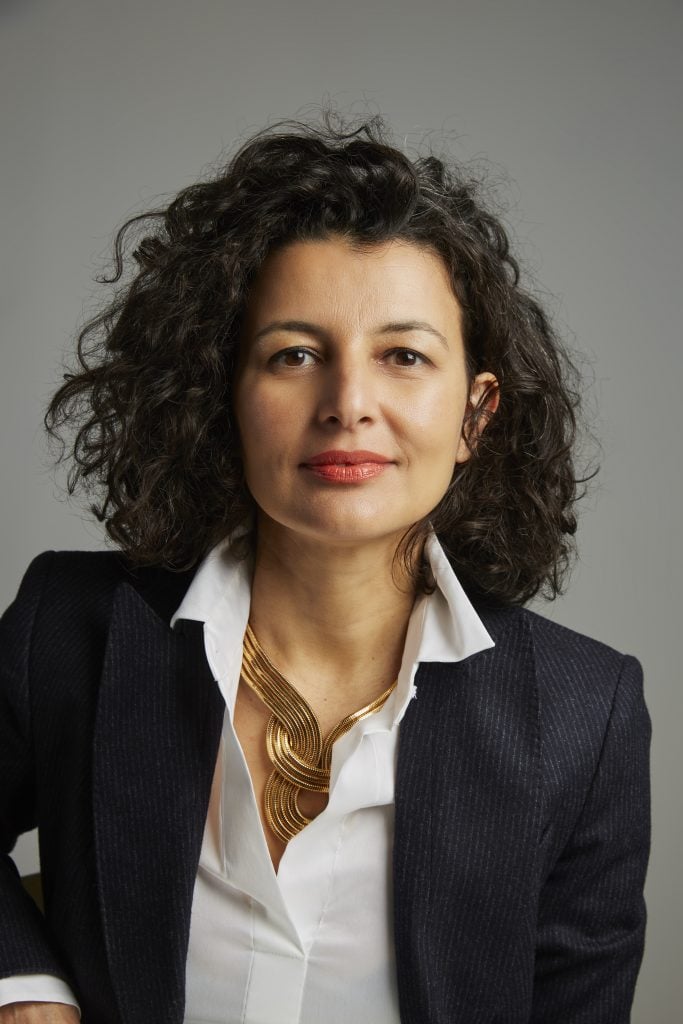Books
Curator Fatoş Üstek on How Museums Can Meet the Moment
Read an excerpt from Üstek's new book, "The Art Institution of Tomorrow: Reinventing the Model."

Read an excerpt from Üstek's new book, "The Art Institution of Tomorrow: Reinventing the Model."

Fatoş Üstek

This excerpt was taken from the introduction of The Art Institution of Tomorrow: Reinventing the Model by Fatoş Üstek, the latest volume in the “Hot Topics in the Art World” series published by Lund Humphries in association with Sotheby’s Institute of Art. The book is available direct from Lund Humphries or your local bookshop.
The world is in crisis, seeking a new direction in which to evolve with meaning and integrity—although it often does not seem this way. On the contrary, it may at first appear as if we are heading in precisely the opposite direction, where our experiences are hollow and communities divided. For instance, humanity is still plagued by unforeseen events and conflict: besides the climate emergency, the identity crises affecting nations across the globe, mass migration, and the refugee crisis, there is the ongoing trauma of civil and international wars. At its outset, the 21st century resembles its predecessors: beset by wars, destruction, and socioeconomic turmoil. With the advancement of technology and the mass adoption of the internet, the tensions and friction generated from this steady stream of shocks are now reverberating on a seismic scale, whilst global connectivity is also providing expanded possibilities for cooperation to overcome these crises. With everyone having a platform to voice their opinions and express their needs, society is empowered to make organizations accountable for their actions.

A participant her hands with painted words “Future is in our hands” during the Climate strike on November 18, 2022, in Warsaw, Poland. Photo by Artur Widak/Anadolu Agency via Getty Images
The crises of the world impact art institutions and accentuate the crises that they find themselves in. The majority of medium and large- scale art institutions are in stagnation, fixated on their current circumstances, generating intellectually and financially cautious activities. They are not taking risks or pushing boundaries. This institutional crisis manifests itself in stale and populist programming that lacks curatorial rigour and artistic nuance, resulting in a cultural offer for everyone that is about everything and nothing in particular. The consequence of institutions’ constraining finances (with or without debts incurred during the COVID-19 pandemic), underpaid and overworked staff, authoritarian demeanour, archaic operational frameworks, and financial dependencies all play a crucial role. I believe the majority of art institutions are at the moment standing still in fear of any movement that might precipitate their demise. It is painful to see art institutions in this frozen state, lacking the resourcefulness to imagine new horizons.
Author and public speaker Charles Eisenstein describes the condition of crisis and turmoil as a sign of humanity being on the verge of transformation. In his 2011 book Sacred Economics: Money, Gift, and Society in the Age of Transition, he says: “The present convergence of crises—in money, energy, education, health, water, soil, climate, politics, the environment, and more—is a birth crisis, expelling us from the old world into a new.” Today, we can identify significant societal shifts marking this transitioning worldview. For instance, the #MeToo movement, which grew for over a decade before emerging globally in 2017, and the Black Lives Matter (BLM) movement, which combusted following the killing of George Floyd by police in 2020, have together led to a collective, international awareness of the need for an inclusive, diverse, and equitable society. Such social movements impact public-serving organizations, such as art organizations, making them accountable for social change. For instance, Diversity, Equity, Inclusion, and Accessibility policies (DEIA) and institutional practices are put under the spotlight, resulting in a soaring number of manifestos published on anti-racism, inclusion, and diversity in the media and on organization-specific platforms.
In a similar vein, the COVID-19 pandemic was a global crisis that led to real breakthroughs in multinational cooperation. In the arts, the COVID-19 pandemic fuelled a collaborative ethos amongst art institutions nationally and internationally, irrespective of their scale and size. In parallel, a small number of commercial galleries formed the Galleries Climate Coalition (GCC) in 2020 as an international community of arts organizations with the goal of reducing the art sector’s environmental impact. Today, GCC is operating on multiple continents with a growing network of aligned commercial and public art galleries.

The founding members of the Gallery Climate Coalition. Courtesy GCC.
The change that is happening, though, is still snail-paced and at a micro-scale. Many institutions fail to transform their policies into action and fall short of meeting the needs of artists and staff. Their programming strands are reactive, populist, and dependent on external factors such as funding compliance, visitor footfall, and governmental strategies. Despite good intentions and prolific expertise, a large number of art institutions are trying to preserve their authority as cultural centers with mainstream and populist programs. Others generate immediate reactions and deliver exhibitions that are simplified in their curatorial conception, artistic rigor, and mediation, resulting in fast-consumable, Instagrammable art encounters. With regards to issues that necessitate grassroots structural change—such as diversity of inclusion that manifests in staff profiles and in programmatic content—some institutions find relief in short-term solutions to get themselves out of urgent situations, but most end up addressing the symptoms of their challenges rather than the deeper causes.
Despite the small steps taken towards cooperation, the arts sector is still disjointed, exclusive, and competitive. Public institutions race against one another to premiere an exhibition or sign up a popular and commercially successful artist. The strong financial capacity of the commercial sector versus public art institutions with shrinking budgets creates unproductive friction. Additionally, without comparable economic strength, art institutions lose the ability to deliver ambitious programs with high production costs. They fall behind not only in failing to engage artists who work with the latest expensive technologies (unless they are backed by commercial galleries) or by avoiding projects with high production values, but they also depreciate their leverage and credibility in leading the sector.
While art institutions are grappling with these sectoral power dynamics, their outdated funding models further prevent them from responding to their internal problems resourcefully. On an ongoing basis, they are putting out fires. The threat of closures for museums is serious. However, the situation prior to the pandemic was no rose garden either. The public arts sector has been historically underfunded and understaffed. Art institutions have always been dependent on funding, and I would argue that they have notoriously operated on a degenerative mindset, a term I am borrowing from theoretical economics. Furthermore, most publicly supported art institutions operate with inadequate staff salaries, sub-optimal employment conditions, and tenuous short-term (or zero-hour) contracts. Most institutions blame the lack of fair pay on their dire financial situation. However, fair practice is not limited to fair pay, but also to fair contracts, fair management, fair representation, and healthy working environments.
The majority of art institutions operate in unhealthy working environments themselves. Their pyramidic structures and hierarchical procedures prevent distributed decision-making. Institutions’ governing bodies, benefactors, and stakeholders often make top-down decisions affecting day-to-day operations, resulting in internal challenges for staff to deal with. This hierarchical structure and the sometimes secretive or oppressive nature of internal operations at art institutions can cause disputes with destructive outcomes.
Alongside internal problems, external pressures restrict institutions’ potential. The expectations from funders for institutions to comply with their respective strategies can become an arduous task for those institutions. For instance, the U.K. National Portfolio Organizations (NPOs) funded by the Arts Council England (ACE) on a three-year basis are expected to comply with their Cultural Policy and grant requirements in order to access their funds. That is, alongside the institutional programming that the directors and senior curators put together in alignment with their vision, mission, and values, as an NPO, each organization is expected to integrate the goals of the ACE Cultural Policy and deliver quantitatively measurable outcomes.

Source: Restitution and Repatriation: A Practical Guide For Museums in England, published by Arts Council England, on August 5, 2022
Art institutions are also undergoing an ontological crisis. As a Western-centric construct, they are characterized by their colonialist legacies. Their attitude towards defining culture and their (degenerative) mindsets are informed by colonial strategies that have historically integrated art and artifacts, and at times extracted artistic positions aligned with the dominant ideology. It is no surprise that the Western-centric art discourse is under scrutiny today. The global art sector and the wider public question the viability of established institutional narratives and voices. For instance, demodernization, decanonization, and decolonization are new movements that have gained momentum over the last two decades and that specifically address the art canon, where possible seeking to deconstruct its foundations. Likewise, many heritage institutions are seeking ways to reconstruct their inherited attitudes and behaviors. For instance, Pitt Rivers Museum in Oxford appointed Marenka Thompson-Odlum, a young Black female curator, to revise captions and narratives in its collections in order to accurately represent the objects, their cultural backgrounds, and the actual functions of socially and spiritually valuable artifacts.
Whilst seeking sustainable financial frameworks, and improving their organizational structures, art institutions need to respond to internal problems and external pressures in a meaningful and constructive way. Otherwise, they may lose their committed audiences, be left to function without an adequate workforce and end up struggling to exist. The Art Institution of Tomorrow sets out to highlight the current struggles faced by art institutions and to propose positive and applicable solutions to their current challenges. While doing so, it aims to bring a holistic perspective on how change can happen in diverse institutional frameworks and to put forward practical methodologies and strategies for implementing solutions within the context of crises.

Fatoş Üstek. Photo: Christa Holka.
Fatoş Üstek is an independent curator and writer, and a leading voice in contemporary art. She is curator of Frieze Sculpture, London and co-founder and managing director for FRANK Fair Artist Pay. She was previously director of the Liverpool Biennial, director of the Roberts Institute of Art, curator of Art Night, 2017, London, and associate curator of the 10th Gwangju Biennial, South Korea. In 2015, she was the Art Fund curator at fig-2, a groundbreaking project which presented 50 projects in 50 weeks, at the ICA, London.